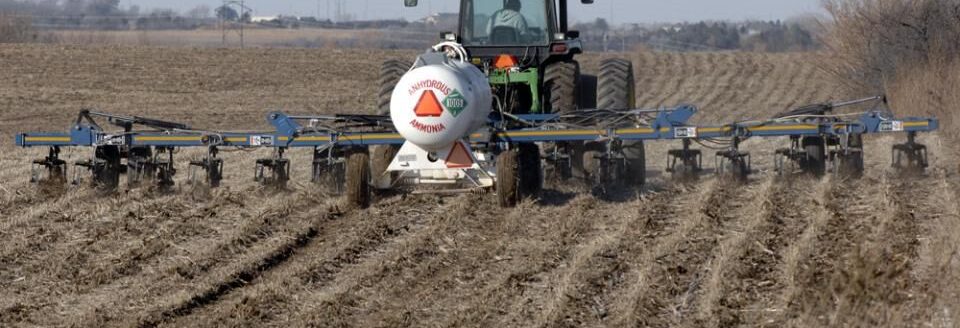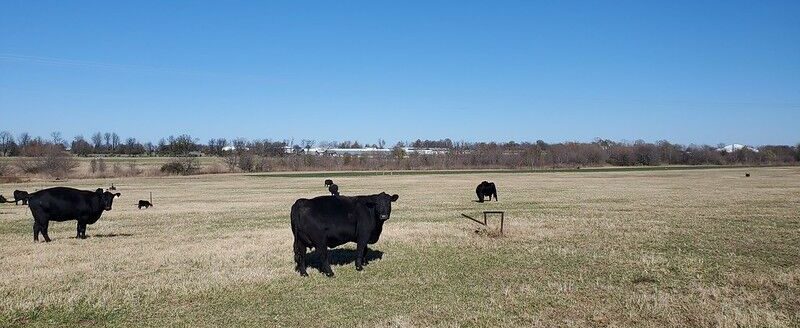An increasing number of battles against fall armyworms are being reported around the state, and Texas A&M AgriLife Extension Service experts are recommending forage producers be prepared to fight infestations.
David Kerns, Ph.D., AgriLife Extension state integrated pest management coordinator and professor in the Texas A&M Department of Entomology, said fall armyworm activity has increased over recent weeks. He noted infestations in Corpus Christi and egg lays around College Station and noted that forage producers in the eastern half of the state should actively monitor pastures for the pest.
“Applications are ongoing, and we’re really on the front end of infestations, so they are definitely something to look out for,” he said.
Fall armyworm populations typically build following large rain events that promote grass growth for the pest populations to develop and build. The pest is extremely damaging to forages and got its name because they appear to march army-like across hay fields, consuming the grass in their path.
The pest’s name is also indicative of their active season, and activity typically begins to increase between July and September, but wet weather can trigger outbreaks, Kerns said. The pest can persist until frost.
Vanessa Corriher-Olson, Ph.D., AgriLife Extension forage specialist, Overton, said she has also seen increased reports of fall armyworm activity. She highly recommends producers who value forages to be on alert.
“We see how well Bermuda grass responded to the moisture, and so given the drought and the short hay supplies, forage resources are precious and should be protected accordingly,” she said. “If you’ve invested in fertilizer or planted winter pasture, you need to protect that investment.”
Monitor valued forages for fall armyworms
Fall armyworms are green with brown or black colorations and can be identified by the white inverted Y on their head. They can grow up to 1.5 inches in length when mature.
Fall armyworm moths can lay up to 2,000 eggs that hatch in two to three days, according to a 2021 report by Dalton Ludwick, Ph.D., AgriLife Extension entomologist, Corpus Christi. Fall armyworm management suggestions can be found in Ludwick’s report, and in the AgriLife Extension entomology guide, Managing Insect Pests of Texas Forage Crops.
Corriher-Olson said fertilized Bermuda grass and small, tender seedling cool-season forages are at a greater risk of being infested by fall armyworms.
Whether producers hope to make one more cutting of warm-season hay or establish good stands of cool-season forages like ryegrass or winter wheat, Corriher-Olson said they should be ready to act against fall armyworms as soon as the pests near threshold.
Corriher-Olson recommends producers scout for fall armyworms in the morning.
“You should have products on hand and be ready to spray because tomorrow could be too late,” she said. “Scout early and treat them immediately once they reach threshold because they can demolish a field overnight. You can tell pretty quickly if you have a problem by walking through a pasture. Scouting may take a little time, but it doesn’t cost anything and could be the difference in saving a pasture or losing it to fall armyworms.”
Be ready to control quickly, effectively
Corriher-Olson and Kerns said they have not heard of any product shortages, but producers should have pesticides labeled for fall armyworms at the ready. Kerns said despite inconsistent fall armyworm control with pyrethroids in 2021, AgriLife Extension tests in College Station and Port Lavaca have shown pyrethroids to be an effective, economic treatment option for producers.
“Pyrethroids appear to be providing good control this year,” he said. “A week out from a test and you can see those pastures are having a few more fall armyworms in them but not enough to respray. There are better products, but pyrethroids are so much more economical.”
Corriher-Olson said combination sprays of pyrethroids and products that provide residual coverage can be an effective one-two punch that provides control over a longer period, which can be important when weather creates conditions for multi-generational outbreaks.
Another noteworthy pasture pest, especially in Central Texas this season, are desert termites, Kerns said. The pest eats dead grass but will cover healthy grass in mud tunnels to kill and then eat it. The tiny mud tunnels along the soil surface amid dead grass are a visual sign of desert termite.
“They seem to be everywhere from Uvalde to Hillsboro, but they are primarily a Central and West Texas pest,” he said. “As the name implies, they like dry weather.”
Kerns said experiments with the pyrethroid, lambda-cyhalothrin, reduced desert termite activity by 95%, but it is not labeled for the pest. However, producers treating fall armyworms with lambda-cyhalothrin should see good desert termite control. Pyrethroids can also be effective against another forage pest—Bermuda grass stem maggot flies—if they are present during application, Corriher-Olson said.
Corriher-Olson noted reports of stem maggot in some East Texas fields, but no major outbreaks so far. But she said they are also worth monitoring. Flies lay eggs in the plant stem, and the larvae move into the upper node to eat, which causes damage to the top two leaves. Infestations can look similar to frost damage.
“It is one of those years that protection of forages should be at a premium,” she said. “Whether you’re protecting new growth for winter grazing or a fertilized pasture you hope to get one more cutting before grasses go dormant, when it comes to fall armyworms, you just have to think about the value of that forage.”



